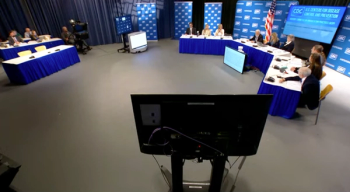
Congress can help curb high health care costs—it starts with primary care
Passing Primary and Virtual Care Affordability Act would help by ensuring better access to primary care services
Rising health care costs have dangerous consequences for Americans and our health care system. A
These statistics are equally frustrating and troubling. However, if our nation’s leaders are truly looking to reduce health care costs and improve the health of our nation, there is a proven solution: investing in primary care.
We can all agree that access to a primary care physician has never been more important. However, benefit designs and skyrocketing health care costs continue to create barriers to primary care for many Americans. As patients, families and employers struggle to find affordable coverage, some are turning to insurance plans that may save money in the short-term. While high-deductible health plans (HDHPs) are intended to mitigate unnecessary health care expenses, their high out-of-pocket costs limit access to services that are critical for patients’ well-being.
According to the
This is particularly troubling for patients in low-income households, as well as primary care physicians, whose efforts focus on comprehensive, longitudinal, preventive care. We know that individuals who forgo a primary care visit are more likely to experience worsening health conditions and may end up seeking care in a more expensive setting, such as an emergency department or urgent care. These are trends we cannot allow to continue. Often, patients enrolled in HDHPs are stuck between a rock and a hard place—choosing whether to see their trusted physician, but pay a high out-of-pocket cost, or skip care altogether and risk exacerbating their condition.
Without timely primary care, many acute and chronic illnesses could be left untreated and result in more emergency department visits, hospitalizations, or other costly outcomes. Thankfully, Congress is working on a solution. The bipartisan
We know that health plans and employers want to expand pre-deductible coverage, especially for primary care office visits and certain telehealth visits. After the
Importantly, the legislation also includes a provision for HDHPs to cover telehealth services before patients reach their deductible through 2026. That’s two more years for patients who may lack access to transportation or are unable to take time off work to see their primary care physician. This creates parity between in-person and telehealth primary care services and allows patients and their physicians, rather than arbitrary policies, to determine the most appropriate modality of care,
As the country grapples with escalating costs of coverage, it’s critical that patients, families and communities can access primary care physicians—free of barriers and free of steep financial costs. Family physicians know this all too well and will be meeting with lawmakers next week to encourage Congress to enact patient-centered policies like the Primary and Virtual Care Affordability Act. This commonsense legislation can help us take important steps towards ensuring that patients and families have access to their primary care physician without worrying about how they’ll afford it—a vision we can all get behind.
R. Shawn Martin is executive vice president and CEO of the American Academy of Family Physicians.
Newsletter
Stay informed and empowered with Medical Economics enewsletter, delivering expert insights, financial strategies, practice management tips and technology trends — tailored for today’s physicians.















